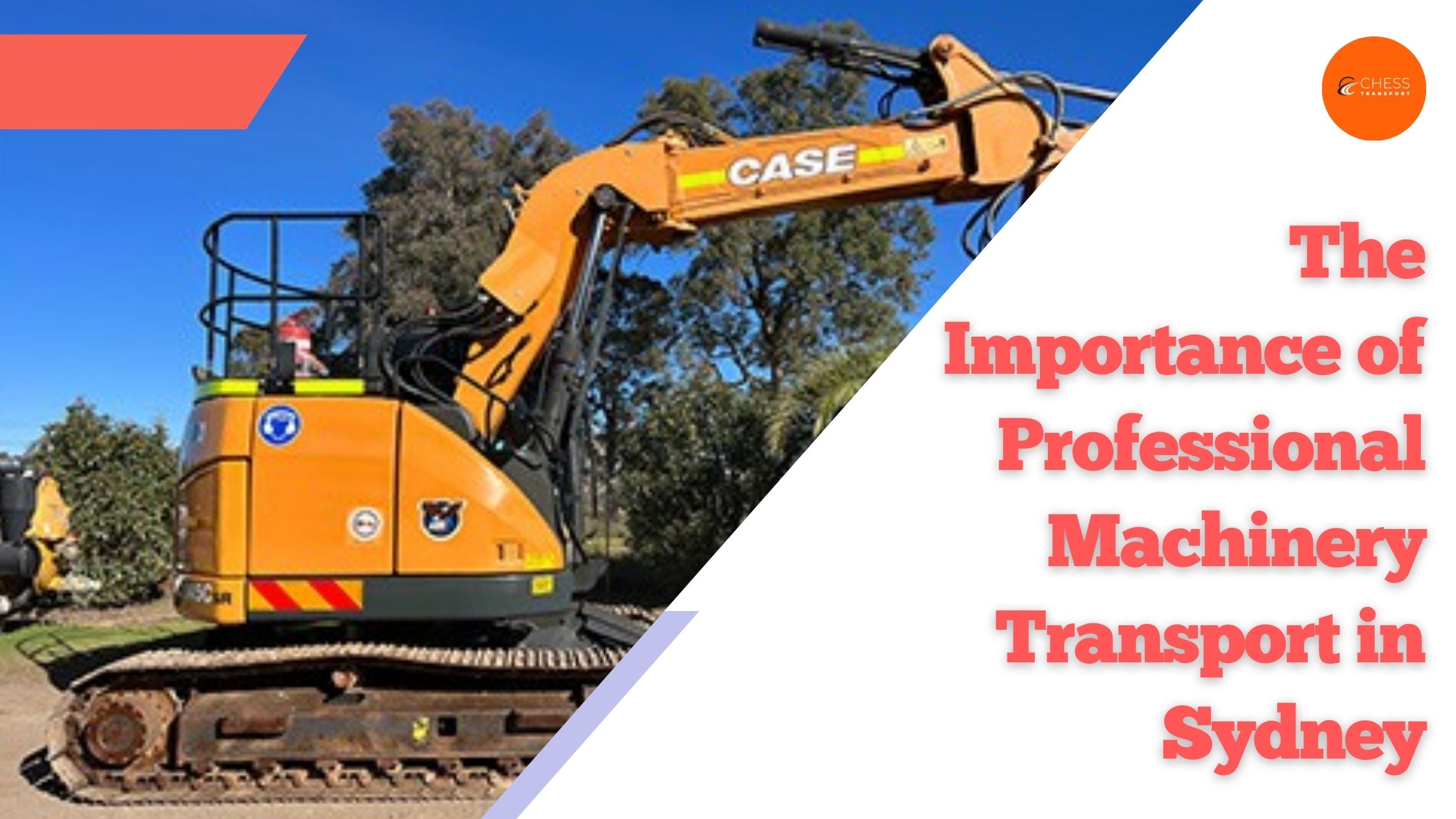How To Safely Load And Transport Heavy Equipment
It is essential to handle large machinery and ensure the safety of personnel during loading, transportation, and unloading. Here are comprehensive guidelines to help you safely haul construction and heavy machinery.
Preparing Heavy Equipment for Transport
Perform a Documented Risk Assessment
Conducting a risk assessment is crucial for compliance and safety. Documenting potential risks, weight loads, and transportation timelines ensures thorough preparation. A senior manager or supervisor should carry out this assessment detailing the entire operation and transportation timeline, including weight loads and relevant project risks, along with measures taken to address them.
Outfit Sites With PPE
Personal Protective Equipment (PPE) is mandatory for all construction operations, including the transport of heavy machinery. To mitigate liabilities, ensure your crew is equipped with a complete set of PPE and document this in your risk assessment and permit application.
Inspect the Hauling Capacities of Your Truck or Trailer
A thorough inspection of your trailer or truck is vital:
- Tires: Assess the condition and pressure.
- Lights: Ensure all front and brake lights are functioning.
- Brakes: Check all brake functions and components.
- Tie-Down Points: Verify the number, condition, and spacing. Each tie-down point should have its binder or boomer and individual chains connected to trailer hitch points.
- Weight: Confirm the tie-down working load limits total at least half the weight of your load.
Heavy equipment with attachments requires additional tie-down points. For example, an excavator with attachments should have at least five tie-down points.
How to Load Heavy Equipment Safely
Designate Responsibilities
Assign clear roles for each team member involved in the loading process. It includes a machinery driver and a spotter to provide hand signals and directions. Ensure no other personnel or vehicles interrupt the loading process once it starts.
Clean the Ramp and Trailer
To maximize traction, ensure the ramp and trailer decks are free from dirt, oil, and debris. If necessary, use ramp friction devices.
Clear and Level the Loading Area
Choose an uninhabited, level area to set up the ramp. Ensure the ground is compact enough to support the loaded trailer's total weight.
Begin the Machine/Ramp Line-Up
With the driver in the cab and a spotter positioned for clear communication, drive the heavy equipment up the ramp slowly. Ensure the machine's weight is distributed toward the front of the trailer to avoid fishtailing during transport.
Start Chaining Down Heavy Equipment
Check state laws on securing heavy equipment for public highway transportation. Use the required number of tie-down points, ensuring each chain is tight and properly located. Verify that chain and hook binder grades match and that the sum of working load limits equals at least 50% of the cargo weight.
How to Transport Heavy Equipment Safely
Map the Best Route
Plan your route to avoid obstacles like low overpasses. Conduct a run-through to check for potential issues, ensuring a smooth and safe journey.
Apply for a Transportation Permit
Most heavy construction equipment qualifies as oversized. Apply for the necessary permits to comply with state regulations, avoid penalties, and ensure safe transport.
Immobilize Equipment Wheel Components
Apply the equipment's parking brake and secure the wheels with wedges, chocks, or cradles. This prevents rolling and counters the forces exerted during transport.
Outfit Transport Vehicles With Safety Signs, Labels, and Lights
Equip your transport vehicles with banners, signs, and lights to alert other drivers. If necessary, use escort vehicles, ensuring clear communication between transport and escort drivers via CB or two-way radios.
Run and Document Inspections While En Route
Perform regular inspections, especially during long-distance transport. Check the load within the first 50 miles, then every three hours or 150 miles, and document each inspection, mainly when there's a change of driver or duty station.
How to Safely Unload Heavy Equipment
Clear and Level the Unloading Site
Ensure the designated unloading area is clear and level. Notify personnel of the unloading schedule to prevent interruptions and ensure the site is prepared.
Do a Walkthrough
Conduct a visual inspection of the unloading area, ramp, and equipment. Confirm the ramp is clean and correctly aligned with the trailer bed.
Free the Load
Slowly release tie-downs one at a time, starting with the rear corners. Use caution to prevent chains from snapping if tension is not appropriately reduced.
Slowly Back the Heavy Equipment Down the Ramp
Gradually unload the equipment with the operator and spotter in clear communication. Ensure all personnel stay clear of the unloading area.
Wrap It Up
Perform a final inspection of all equipment, the transport vehicle, and tools. Document the successful completion of the transport.
Conclusion
Transporting heavy equipment requires meticulous preparation, compliance with safety standards, and careful execution. By following these guidelines, you can ensure the safe and efficient loading, transport, and unloading of heavy machinery, minimizing risks and enhancing productivity.
If you have any questions or need assistance with your construction equipment needs, feel free to contact us. Whether you need loader transport, heavy machinery transport, or EWP transport, we're here to help you navigate the complexities of heavy equipment logistics.
Share this guide online or print it for future reference, and don't hesitate to reach out with any questions or concerns about your construction equipment.


Comments
Post a Comment